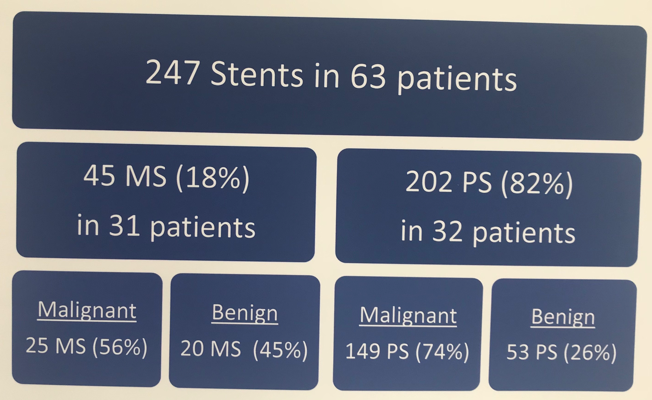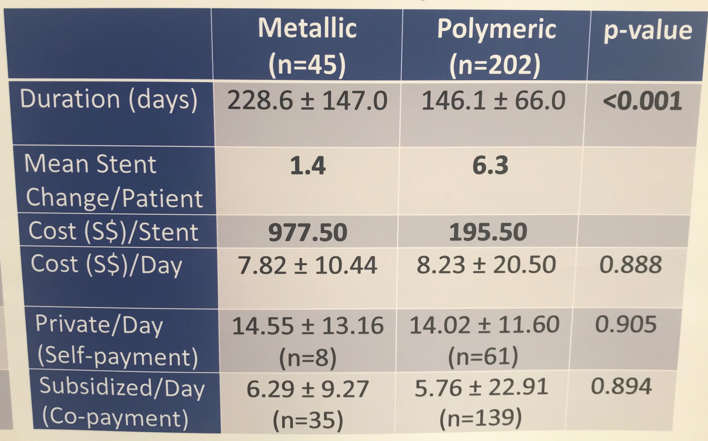Data for this study was collected through a retrospective review of all ureteric stents inserted at their center for long term ureteric drainage over a 4 year period. Stent failures were defined as complications with obstruction, urosepsis, or malposition of the stent. The number of indwelling days was calculated from the date of stent insertion and date of stent removal. Average costs were determined as the cost of the inserted stent per indwelling day, which took into account hospital and procedural charges, ureteric stent cost, and total indwelling duration of the stent.
Following the accrual of patient data, a total of 247 stents were placed into 63 patients with CUO over the 4 year period (Figure 1). In regard to stent failure, it was shown that there was a 15.6% failure in the MS group and 11.4% failure in the PS group, however, this difference was not significant. The mean indwelling stent duration was significantly greater for the MS cohort than the PS cohort, which resulted in lower average stent change per patient. Of note, MS had a much higher average cost per stent at about $977.50 as compared to PS with a cost of $195.50. However, when the cost of the stent per day of insertion was analyzed, the cost was reduced to 7.82 ± 10.44 for MS compared to 8.23 ± 20.50 for PS, thus showing that the stent was less expensive when taken into account for the time it is left indwelling.

Figure 1: Breakdown of the patient cohorts, separated by whether the stent was a metallic stent (MS) or polymeric stent (PS), then further separated by whether the chronic ureteric obstruction was malignant or benign.

Figure 2: Combined cost analysis of the metallic versus polymeric stents.
At the conclusion of her presentation, Dr. Ang stressed the importance of her team’s research and explained the benefit of the cost per stent for each indwelling day was a more accurate representation of real life costs for the two types of ureteric stents. She further added that the Resonance® MS is a cost-effective option for the treatment of CUO due to its significantly greater indwelling time while also greatly reducing the number of procedures the patient must undergo. Therefore, she urged her audience of practicing urologists to consider the implications of this stent treatment option for long-term ureteric drainage for patients suffering from CUO.
Presented by: Zhou Ang, MD, Department of Urology, National University Hospital, Singapore
Authors: David Terrence Consigliere, Benjamin Goh, Tiong Ho Yee
Author Affiliation: Department of Urology, National University Hospital, Singapore
Written by: Zachary Valley Twitter: @ZacharyAValley, Department of Urology, University of California-Irvine, medical writer for UroToday.com at the 36th World Congress of Endourology (WCE) and SWL - September 20-23, 2018 Paris, France


